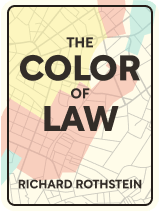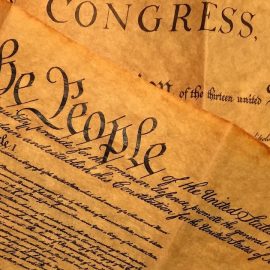

This article is an excerpt from the Shortform book guide to "The Color of Law" by Richard Rothstein. Shortform has the world's best summaries and analyses of books you should be reading.
Like this article? Sign up for a free trial here .
What are the available solutions to housing discrimination? How can housing discrimination be prevented?
Financing integration, banning exclusionary zoning, and reforming discriminatory laws are all practical solutions to housing discrimination. Housing discrimination can be prevented by making people understand that segregation hurts everyone, and by educating people about the existence of residential segregation.
Read on to discover the solutions to housing discrimination outlined below.
Are There Any Solutions to Housing Discrimination?
If outlawing discrimination in the private sector and enacting public policies to help low-income families find housing have failed to remedy racial residential segregation, what are the feasible solutions to housing discrimination? Because undoing racial residential segregation—and the intergenerational damage it has done to African American wellbeing—is a massive challenge, Rothstein is loath to offer remedies for fear they will inevitably come up short. Nevertheless, he proposes some solutions to housing discrimination that may, in time, lead to a more integrated, and thus more equitable, society. Those solutions are:
- Acknowledging de jure segregation
- Understanding that segregation hurts everyone
- Educating US youth about racial residential segregation
- Financing integration directly
- Banning exclusionary zoning and implementing inclusionary zoning
- Reforming Section 8
Acknowledging De Jure Segregation
First and foremost, Americans must realize that racial residential segregation isn’t the result of personal choices or the random outcomes of the housing and labor markets. Rather, it is the legacy of explicitly discriminatory public policy that flouted the US Constitution and US laws. Once elected officials, policymakers, and the public at large acknowledge that federal, state, and local governments were responsible for racial residential segregation, it opens the door for those same governments to enact bold solutions to housing discrimination.
There have been efforts in this direction. In 1970, HUD secretary George Romney created a program called “Open Communities.” The program’s goal was to further the integration of white neighborhoods by withholding federal funds from suburbs that hadn’t repealed their discriminatory zoning laws. Unfortunately, resistance to the program among Republican voters was fierce, and President Nixon eventually forced Romney to repudiate the program.
In 2015, the Obama administration latched onto a minor provision of the 1968 Fair Housing Act to require localities to assess their degree of segregation and, if high, propose policies to address it. Implicit in the new rule was the possibility that federal funds might be withheld from communities that didn’t address segregation. (Shortform note: This rule lacked support when the Trump administration assumed the reins of government, and HUD secretary for the Trump administration, Ben Carson, terminated the rule in 2018.)
Educating U.S. Youth About Racial Residential Segregation
In addition to public acknowledgment of the government’s role in segregating the US, the US’s education system must also incorporate the facts of residential segregation into its curricula. Before the US can move forward with the far-reaching policies necessary to rectify racial residential segregation, its citizens must have a shared understanding of how the country was segregated.
For example, one of the most widely used American history textbooks in US high schools only contains one sentence on racial residential segregation in the northern states, and that sentence is passively constructed to obscure the causes of the segregation. (The same textbook, in its units on New Deal programs like the HOLC and FHA, fails to mention that those programs redlined urban centers and systematically excluded African Americans from receiving benefits.)
Similar obfuscations—and, in some cases, outright falsehoods—feature in other widely used textbooks, with the result that young Americans grow up believing segregation was a natural or mysterious process rather than a conscious and purposeful goal of official policy.
Understanding That Segregation Hurts Everyone
Next, people must understand that segregation hurts everyone. Social science literature has shown that whites who live, work, and learn in exclusively white spaces experience both psychological and economic hardship. It’s a mere misconception that whites remain unaffected by racial residential segregation—that only African Americans confined to racial ghettos are harmed.
For example, studies have shown that when people are grouped with others from similar backgrounds, they are less creative and more prone to error and groupthink. And political scientists have shown that racial polarization leads to political preferences among whites that actually harm their own interests. For example, leaders whose policies harm white working-class voters will nevertheless attract those voters with racial appeals.
Financing Integration Directly
Although politically infeasible, one of the most straightforward solutions to housing discrimination is subsidizing the purchase of homes in those neighborhoods by African Americans.
One way to subsidize Black families is for the government to purchase homes at market rates in predominantly white areas segregated by FHA policy and sell them to African Americans at historically pegged prices. An example would be to purchase the next 15% of homes in Levittown—because the New York metropolitan area is 15% Black—and sell those homes to African American purchasers at, say, $75,000 (the price their grandparents would have paid for the home).
Another strategy would be for the federal government to fund middle-class Black families to allow them to move to predominantly white neighborhoods. Middle-class Black areas like Prince George’s County, Maryland, and Calumet Heights, Illinois, border distressed areas that present risks for the children in those families, and so those families, given the financial means, may be inclined to move to high-income areas.
Of course, no African American family should be forced to integrate an area against their will. Even with a financial incentive, some middle-class Black families may resist moving to white areas for fear of encountering harassment, or just social exclusion. Some ways predominantly white areas can attract African American families, subsidies or no, is by creating community welcoming committees and advertising new listings with agents who work with African American homebuyers.
Banning Exclusionary Zoning and Implementing Inclusionary Zoning
A relatively blunt instrument to undo racial residential segregation is to ban zoning ordinances that prohibit multi-family homes and require large lots (ordinances that were often racially motivated in the first place).
Another possibility is to withhold the mortgage interest deduction from homeowners in punitively zoned areas or areas that aren’t taking steps to accommodate low- and middle-income families. For example, in 1993, a UNC law professor proposed the “Fair Share Act,” which would require state and local governments to integrate municipalities both racially and economically. If public officials balked at the requirements, homeowners’ mortgage interest and property tax deductions would be reduced by 10%, and the penalty would increase with each year the Act’s requirements weren’t met.
In addition to mitigating the effects of exclusionary zoning laws, states and municipalities can enact inclusionary zoning laws. These laws actively promote the construction of affordable housing and the attraction of low- and middle-income families (many of whom, as noted in Chapter 10, are African American).
Examples of inclusionary zoning statutes can be found both at the state and county levels. In New Jersey, state law stipulates that suburbs that don’t contain their “fair share” of affordable housing—based on the percentage of low-income residents in a given metropolitan area—must allow developers to build multi-unit housing.
In Montgomery County, Maryland, the local government legislated inclusion at two levels: Developers are required to reserve 12%–15% of units for families of moderate means, and then the public housing authority purchases a third of those units for the lowest-income renters.
Reforming Section 8
As discussed in Chapter 11, all too often, the Section 8 program reinforces segregation due to insufficient voucher amounts and discriminatory landlords. But, with the right reforms, the program could be a powerful tool for integration.
One key reform would be to increase voucher amounts. The Department of Housing and Urban Development (HUD) has already settled civil rights lawsuits by providing more generous subsidies for low-income families, and these families have been able to settle in low-poverty and predominantly white areas. One way to achieve this reform more widely is to calculate voucher amounts based on the cost of living in particular areas: that is, rather than calculate the voucher amount based on a metropolis as a whole—which will skew the amount downward—HUD could provide larger amounts for housing in higher-cost neighborhoods and lower amounts for housing in lower-cost neighborhoods.
Another option would be to increase Section 8’s overall funding. Whereas the property tax and mortgage interest deductions are given to anyone who owns a home, Section 8’s funding is limited and applicants are often denied vouchers due to the program’s running out of money. (In 2015, six million qualified people went without vouchers.)
There are also more targeted reforms that could help promote integration. For instance, Section 8 vouchers are commonly distributed by city housing authorities and limited to housing within the city limits. Vouchers with a greater geographical reach could help integrate suburbs and exurbs.

———End of Preview———
Like what you just read? Read the rest of the world's best book summary and analysis of Richard Rothstein's "The Color of Law" at Shortform .
Here's what you'll find in our full The Color of Law summary :
- How racial residential segregation is the result of explicit government policy
- The three reasons why racial segregation is so difficult to reverse
- The steps that could lead to a more integrated and equitable society






